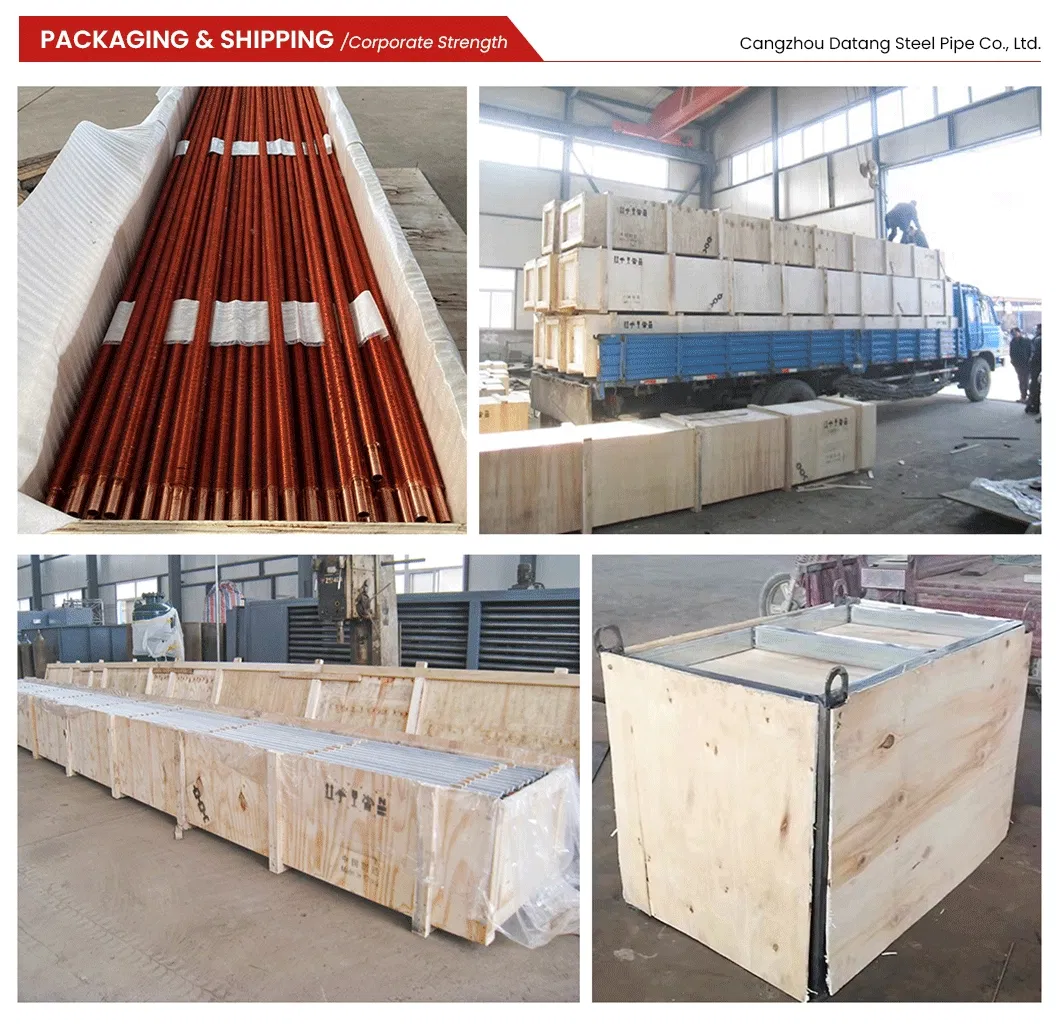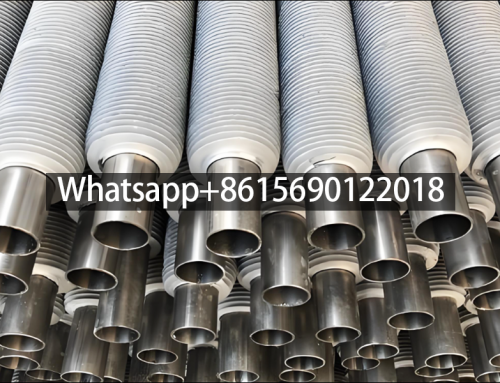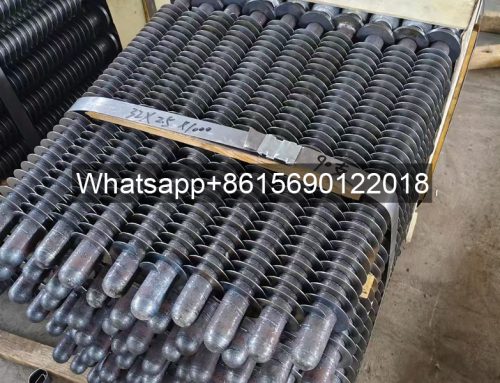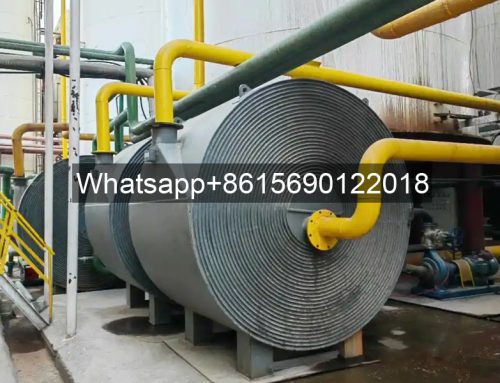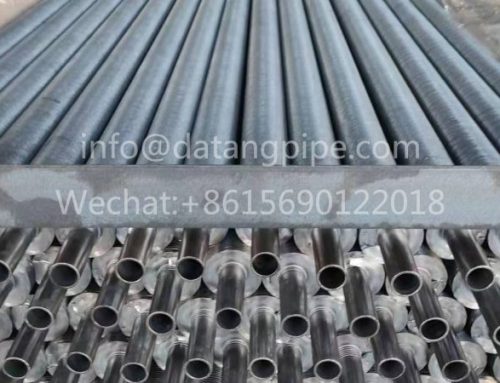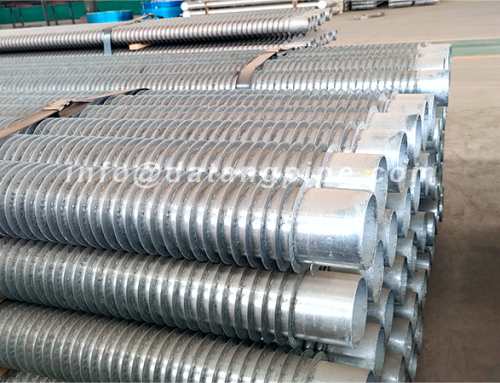What are Extruded Aluminum Fins?
Extruded aluminum fins are heat dissipation components made by tightly attaching aluminum to a base tube (such as a steel or copper tube) through an extrusion process. They offer high heat transfer efficiency and structural stability.
Extruded aluminum fins are heat dissipation components manufactured through aluminum extrusion and are widely used in cold storage, industrial heat exchange, air conditioning, and refrigeration. Their core advantages lie in their high thermal conductivity, lightweight design, and integrated structure, significantly improving heat transfer efficiency.
Stainless steel aluminum extruded fin tubes use a stainless steel base tube as the fin. Fins are tightly bonded to the outer surface of the tube through an extrusion process. They combine the corrosion resistance of stainless steel with the high thermal conductivity of aluminum, resulting in a 30% increase in heat transfer efficiency compared to conventional fin tubes.
Extruded aluminum fin structure
The extrusion process uses specialized equipment to apply pressure to the aluminum, creating a secure bond between the aluminum layer and the base tube, eliminating weld gaps and ensuring long-term stable operation. Fin spacing and height can be customized to suit different heat transfer scenarios.
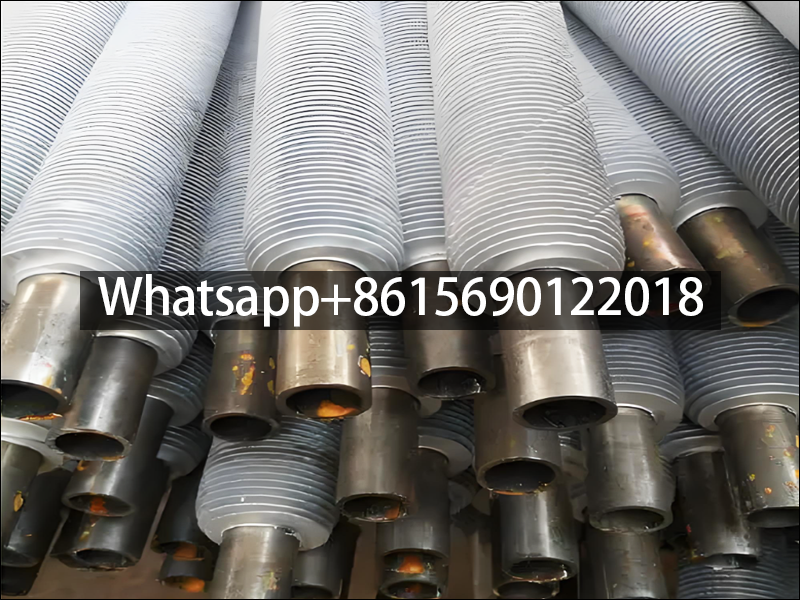
Extruded Aluminum Fins for Air Cooled Heat Exchanger Manufacturer and Suppliers in China Factory
Structural Design
Fin height is typically 5-25mm, with a density of 500-800 fins per meter, significantly increasing the heat dissipation area.
The steel-aluminum composite structure combines the strength of steel with the thermal conductivity of aluminum, making it suitable for high-pressure or corrosive environments.
Specifications of Extruded Aluminum Fins
Extruded aluminum fin specifications are primarily determined by the base tube size, fin parameters, and material. The following are common specifications and technical details:
1. Base Tube Specifications
Tube Diameter Range: Common diameters range from DN15 to DN150 (e.g., DN25, DN50, DN60, etc.). Large-diameter industrial radiators can reach up to DN150.
Wall Thickness: Carbon steel base tubes have a wall thickness of 1.5-3.5mm, stainless steel base tubes have a wall thickness of 1.0-2.0mm.
Material: Base tubes can be selected from 304 stainless steel, carbon steel (10# steel), copper (red copper T2), etc.
2. Fin Parameters
Fin Height: 5-30mm (e.g., 8mm, 12mm, 15mm, 20mm). 12-25mm is commonly used in industrial applications.
Fin Thickness: 0.5-3mm (e.g., 0.12mm, 0.15mm, 0.2mm). Thin fins are suitable for electronic cooling.
Fin Pitch: 2-5mm (e.g., 3mm, 4mm). A dense design (≤2mm) can improve heat dissipation efficiency by 40%.
Fin Density: 500-800 fins per meter, spirally distributed.
3. Materials and Craftsmanship
Fin Material: 1060 aluminum (thermal conductivity 237W/m·K) is the mainstream. Some high-end products use 8011 aluminum foil (highly corrosion-resistant).
Lamination: Steel-aluminum composite (extrusion stress 8.5MPa) or copper-aluminum composite, for high bonding strength.
4. Typical Model Examples
Industrial Models: For example, “10# Steel, 2525, Fin Height 12mm, Fin Pitch 3mm”Or DN50-60mm National Standard Models
Custom Models: Non-standard specifications are supported, such as DN16-219mm base tube + 5-30mm fins
5. Application Recommendations
High-temperature applications: Choose thick-walled carbon steel base tubes (wall thickness ≥ 2.5mm)
Lightweight requirements: Prefer aluminum fins + thin-walled copper tubes (e.g., φ12mm)
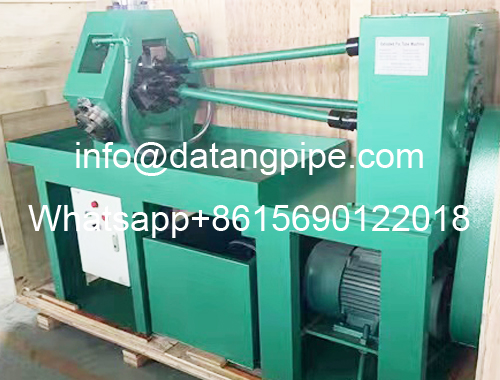
Extruded Fin Tube Machine / Extruded Tube Finning Machine Manufacturers & Suppliers in China
Extruded Aluminum Fin Process Characteristics
Using 1060 aluminum, it offers high thermal conductivity (approximately 237 W/m·K) and corrosion resistance. The extrusion process creates an integrated structure between the fins and the base tube (e.g., steel or stainless steel), reducing thermal resistance and improving heat transfer efficiency by over 40% compared to traditional wound-fin systems.
Extruded Aluminum Fin Applications
Cold Storage Refrigeration: Aluminum fins quickly transfer heat absorbed by low-temperature refrigerants, maintaining a low temperature in cold storage.
Industrial Cooling: Suitable for heat exchange applications involving complex media, such as industrial cooling equipment and chemical processing equipment.
Air Conditioning and Refrigeration Systems: Improve cooling efficiency by increasing the heat exchange area.
Advantages of Extruded Aluminum Fins
Highly Efficient Heat Transfer: Aluminum has high thermal conductivity, and the extrusion process reduces thermal resistance, improving heat transfer efficiency.
Corrosion Resistance: The stainless steel base tube withstands corrosive environments such as humidity and low temperatures.
Lightweight and Durable: Aluminum’s low density makes it easy to install and transport, and its structure is stable and resists deformation.
Fin Pipe Packaging
